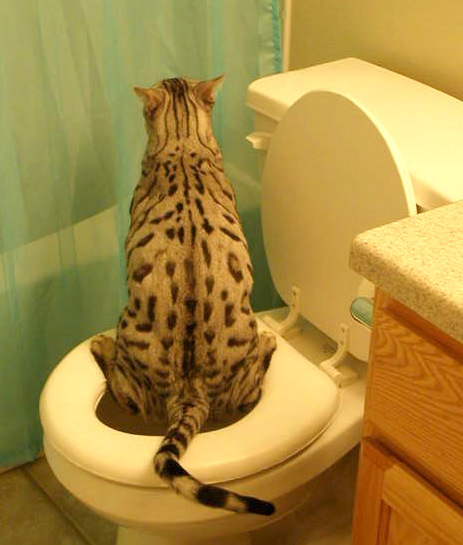Just how do you actually feel in regards to Can You Flush Cat Poo or Litter Down the Toilet??
:max_bytes(150000):strip_icc()/0S1A1090-49a8e2c66f8e41d6901f2559787a7f24.jpg)
Intro
As cat owners, it's necessary to be mindful of exactly how we throw away our feline friends' waste. While it may seem hassle-free to flush cat poop down the bathroom, this method can have destructive effects for both the environment and human health.
Environmental Impact
Purging feline poop introduces dangerous microorganisms and parasites into the supply of water, posing a significant risk to aquatic communities. These pollutants can adversely affect aquatic life and concession water top quality.
Wellness Risks
In addition to environmental worries, flushing cat waste can also posture wellness dangers to human beings. Feline feces might include Toxoplasma gondii, a parasite that can create toxoplasmosis-- a possibly extreme health problem, especially for pregnant women and people with damaged immune systems.
Alternatives to Flushing
Fortunately, there are safer and more liable means to dispose of pet cat poop. Think about the complying with alternatives:
1. Scoop and Dispose in Trash
One of the most usual method of getting rid of cat poop is to scoop it right into an eco-friendly bag and throw it in the trash. Be sure to make use of a dedicated trash scoop and dispose of the waste immediately.
2. Use Biodegradable Litter
Go with eco-friendly feline clutter made from products such as corn or wheat. These clutters are environmentally friendly and can be securely thrown away in the trash.
3. Hide in the Yard
If you have a yard, take into consideration burying feline waste in a designated location away from vegetable yards and water sources. Make sure to dig deep sufficient to prevent contamination of groundwater.
4. Set Up a Pet Waste Disposal System
Invest in a family pet garbage disposal system particularly designed for feline waste. These systems use enzymes to break down the waste, minimizing smell and environmental influence.
Final thought
Liable animal possession extends beyond offering food and sanctuary-- it also entails proper waste administration. By refraining from flushing pet cat poop down the toilet and selecting alternative disposal techniques, we can minimize our environmental impact and shield human health.
Why Can’t I Flush Cat Poop?
It Spreads a Parasite
Cats are frequently infected with a parasite called toxoplasma gondii. The parasite causes an infection called toxoplasmosis. It is usually harmless to cats. The parasite only uses cat poop as a host for its eggs. Otherwise, the cat’s immune system usually keeps the infection at low enough levels to maintain its own health. But it does not stop the develop of eggs. These eggs are tiny and surprisingly tough. They may survive for a year before they begin to grow. But that’s the problem.
Our wastewater system is not designed to deal with toxoplasmosis eggs. Instead, most eggs will flush from your toilet into sewers and wastewater management plants. After the sewage is treated for many other harmful things in it, it is typically released into local rivers, lakes, or oceans. Here, the toxoplasmosis eggs can find new hosts, including starfish, crabs, otters, and many other wildlife. For many, this is a significant risk to their health. Toxoplasmosis can also end up infecting water sources that are important for agriculture, which means our deer, pigs, and sheep can get infected too.
Is There Risk to Humans?
There can be a risk to human life from flushing cat poop down the toilet. If you do so, the parasites from your cat’s poop can end up in shellfish, game animals, or livestock. If this meat is then served raw or undercooked, the people who eat it can get sick.
In fact, according to the CDC, 40 million people in the United States are infected with toxoplasma gondii. They get it from exposure to infected seafood, or from some kind of cat poop contamination, like drinking from a stream that is contaminated or touching anything that has come into contact with cat poop. That includes just cleaning a cat litter box.
Most people who get infected with these parasites will not develop any symptoms. However, for pregnant women or for those with compromised immune systems, the parasite can cause severe health problems.
How to Handle Cat Poop
The best way to handle cat poop is actually to clean the box more often. The eggs that the parasite sheds will not become active until one to five days after the cat poops. That means that if you clean daily, you’re much less likely to come into direct contact with infectious eggs.
That said, always dispose of cat poop in the garbage and not down the toilet. Wash your hands before and after you clean the litter box, and bring the bag of poop right outside to your garbage bins.
https://trenchlesssolutionsusa.com/why-cant-i-flush-cat-poop/

I was guided to that report on How to Dispose of Cat Poop and Litter Without Plastic Bags from an acquaintance on another website. Make sure you take a moment to distribute this post if you enjoyed reading it. Thanks for your time. Visit again soon.
Book An Estimate Now
Comments on “Prevent Plumbing Problems: Don't Flush Cat Poop Down Your Toilet - Expert Guidance”